
The Sphingidae are a family of moths commonly called sphinx moths, also colloquially known as hawk moths, with many of their caterpillars known as "hornworms"; it includes about 1,450 species. It is best represented in the tropics, but species are found in every region. They are moderate to large in size and are distinguished among moths for their agile and sustained flying ability, similar enough to that of hummingbirds as to be reliably mistaken for them. Their narrow wings and streamlined abdomens are adaptations for rapid flight. The family was named by French zoologist Pierre André Latreille in 1802.

Laothoe populi, the poplar hawk-moth, is a moth of the family Sphingidae. The species was first described by Carl Linnaeus in his 1758 10th edition of Systema Naturae. It is found throughout the Palearctic region and the Near East and is one of the most common members of the family in the region. It is distinctive due to its habit of resting with its hindwings held further forward than the forewings.
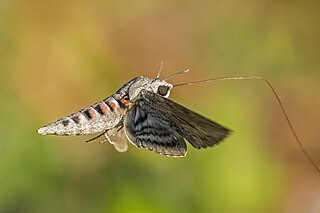
Agrius convolvuli, the convolvulus hawk-moth, is a large hawk-moth. It is common throughout Europe, Asia, Africa, Australia and New Zealand, partly as a migrant. In New Zealand, it is also known as the kumara moth, and in the Māori language as hīhue.

Xylophanes tersa, the tersa sphinx, is a moth of the family Sphingidae. The species was first described by Carl Linnaeus in 1771. It is found from the United States, through Mexico, the West Indies and Central America and into parts of South America. An occasional stray can be found as far north as Canada.

Daphnis nerii, the oleander hawk-moth or army green moth, is a moth of the family Sphingidae. It was described by Carl Linnaeus in his 1758 10th edition of Systema Naturae.
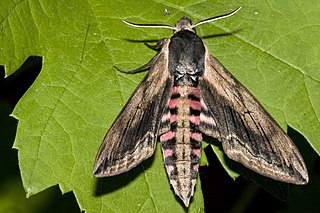
Sphinx ligustri, the privet hawk moth, is a moth found in most of the Palearctic realm. The species was first described by Carl Linnaeus in his 1758 10th edition of Systema Naturae.

Hemaris tityus, the narrow-bordered bee hawk-moth, is a moth of the family Sphingidae which is native to the Palearctic.

Hyles hippophaes, the seathorn hawk-moth, is a species of moth in the family Sphingidae. The species was first described by Eugenius Johann Christoph Esper in 1789.

The willowherb hawkmoth is a moth in the family Sphingidae. The species was first described by Peter Simon Pallas in 1772.

The Sphinginae are a subfamily of the hawkmoths (Sphingidae), moths of the order Lepidoptera. The subfamily was first described by Pierre André Latreille in 1802. Notable taxa include the pink-spotted hawkmoth, being a very common and recognizable species, the death's-head hawkmoths of Silence of the Lambs fame, and Xanthopan morganii with its enormous proboscis.

The Macroglossinae are a subfamily of Sphingidae moths in the order Lepidoptera. The subfamily is divided into three tribes: Dilophonotini, Macroglossini and Philampelini.
Benjamin Preston Clark was an American entomologist who specialized in Lepidoptera, especially Sphingidae. He also operated a mercantile business and patented a new form of twine for binding grain.
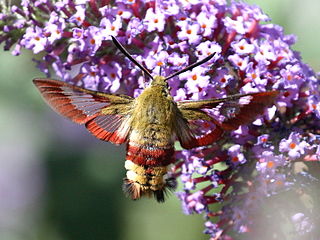
Hemaris fuciformis, known as the broad-bordered bee hawk-moth, is a moth of the family Sphingidae.

Marumba quercus, the oak hawk-moth, is a moth of the family Sphingidae. The species was first described by Michael Denis and Ignaz Schiffermüller in 1775.
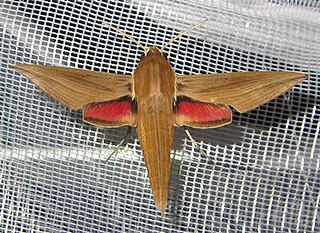
Hippotion eson is a moth of the family Sphingidae. It is very common in most habitats throughout the Ethiopian Region, including Madagascar and the Seychelles. It is a migratory species.
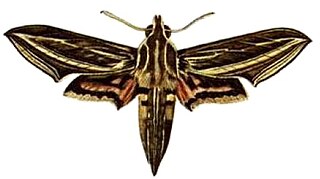
Hippotion osiris is a moth of the family Sphingidae. It is common throughout most of the Ethiopian Region, including Madagascar and the Seychelles. Occasional vagrants have been recorded from Spain. It is uncommon on the East African coast. This species is an occasional migrant.
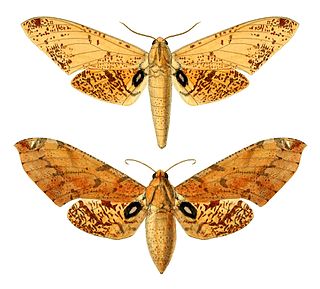
Platysphinx stigmatica is a moth of the family Sphingidae. It is known from forests from Nigeria to the Congo, Angola and western Uganda.
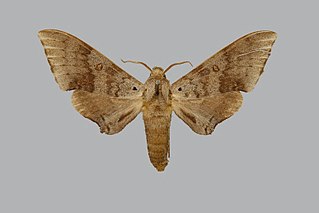
Neopolyptychus prionites is a moth of the family Sphingidae. It is known from lowland forests and heavy woodland from Guinea to the Congo and western Uganda.

Nephele peneus is a moth of the family Sphingidae. It is known from forests and woodland from Senegal to East Africa, Angola and Delagoa Bay.
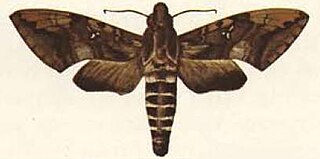
Nephele accentifera, the accented hawk, is a moth of the family Sphingidae. The species was first described by Palisot de Beauvois in 1821. It is common in most habitats throughout the Ethiopian Region, excluding Madagascar and the Cape Peninsula.


















